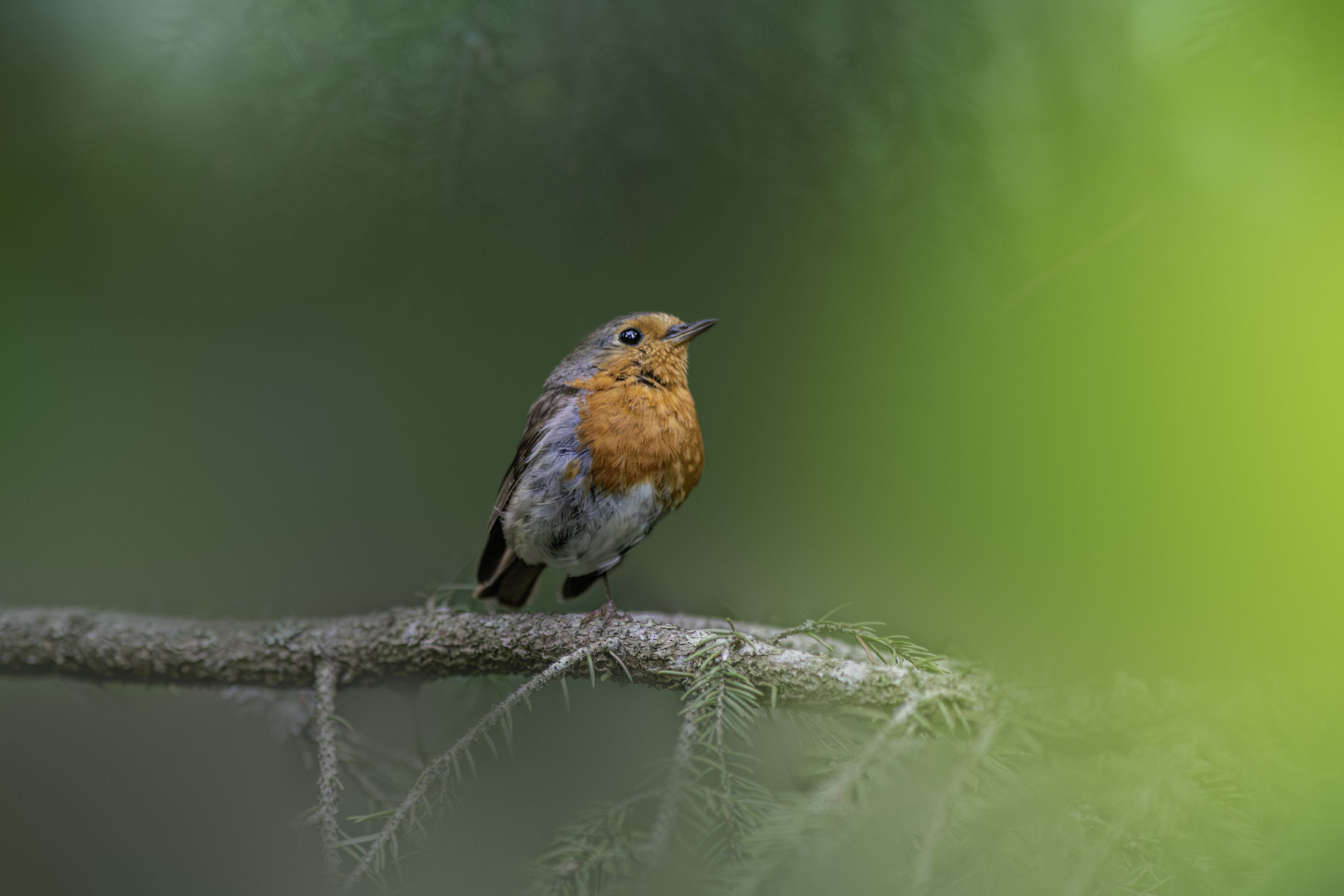The European Robin (Erithacus rubecula), often simply called the robin, is one of Europe’s most beloved and recognizable birds. Known for its bright orange-red breast and melodious song, the robin is a familiar sight in gardens, woodlands, and parks across its range. Its approachable nature and frequent association with humans have made it a cultural icon in many countries.
Physical Description
- Size:
- Length: 12.5–14 cm (5–5.5 inches).
- Wingspan: 20–22 cm (8–8.5 inches).
- Weight: 14–21 grams (0.5–0.7 ounces).
- Coloration:
- Breast: Bright orange-red, extending up to the face and throat.
- Upperparts: Olive-brown.
- Underparts: Pale greyish-white.
- Eyes: Large, dark, and round, giving it a curious expression.
- Juveniles: Speckled brown without the distinctive red breast, gaining adult plumage after their first molt.
Behavior
- Territoriality:
- Highly territorial year-round, defending feeding and breeding territories with aggressive displays and songs.
- Males and females hold separate territories in winter.
- Diet:
- Omnivorous: Feeds on insects, spiders, worms, berries, and seeds.
- Frequently forages near ground level, often hopping and pausing.
- Song:
- Males and females sing, with males using their melodic song to establish and defend territory.
- Sings throughout the year, even in winter, and is one of the earliest birds to sing at dawn.
Habitat
- Found in a wide variety of habitats, including:
- Woodlands and forests.
- Gardens and parks.
- Farmland and hedgerows.
- Prefers areas with dense vegetation for cover and open spaces for foraging.
Life Cycle
- Breeding:
- Breeding season runs from March to July, often producing two broods per year.
- Nesting:
- Builds a cup-shaped nest in concealed locations like tree hollows, hedges, or even man-made structures.
- Made from moss, leaves, and grass, lined with feathers and hair.
- Eggs:
- Lays 4–6 eggs, pale with reddish-brown speckles.
- Fledglings:
- Hatch after 13–14 days of incubation.
- Fledge around two weeks after hatching, with parents continuing to feed them for several weeks.
Distribution
- Widespread across Europe, parts of North Africa, and Western Asia.
- Resident in much of its range, though northern populations may migrate south in winter.
Conservation Status
- Classified as Least Concern, with stable and widespread populations.
- Benefits from its adaptability to human-altered landscapes.
Ecological Role
- Insect Control:
- Plays a key role in controlling insect populations, particularly in gardens and woodlands.
- Seed Dispersal:
- Aids in the dispersal of seeds and berries, contributing to plant regeneration.
Interesting Facts
- Human Friendliness:
- Robins are curious and often follow gardeners, hoping to catch disturbed insects and worms.
- Cultural Significance:
- Associated with Christmas in Europe and often featured on holiday cards.
- Night Singing:
- Urban robins often sing at night due to artificial lighting.
Summary
The European Robin (Erithacus rubecula) is a small bird with a big presence, known for its vibrant plumage and sweet song. Its adaptability, territorial nature, and association with human activity have made it a cherished part of Europe’s avian community. Conservation of its habitats ensures that this iconic bird continues to thrive in gardens, forests, and farmlands alike.
Views: 1137
Subscribe to the newsletter:
